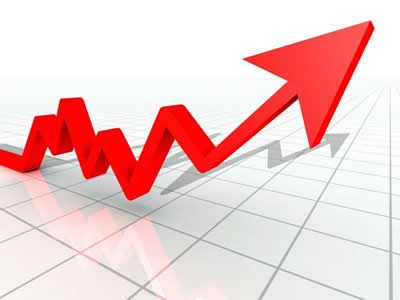Rasmussen: Unaffiliated voters rise to their highest level ever

On the same day that a small earthquake shook the San Fernando Valley, a recent Rasmussen Reports study of partisan trends indicates that unaffiliated voters will likely be shaking up the nation's political landscape.
Voters not affiliated with either party grew from 32.1% in July to 33.5% in August, which Rasmussen notes as being the highest level in its seven years of tracking. Interesting to note is that the ranks of these unaffiliateds grew as Republicans and Democrats duked it out over raising the nation's debt ceiling.
Rasmussen's reported figures in this latest study take into account all adults, not just likely voters. Since November 2002, Rasmussen has conducted telephone interviews with approximately 15,000 adults to keep track of these emerging trends.
The real news here is that there are now just as many Independents as there are Republicans, which is a major accomplishment for a non-traditional political movement. Furthermore, unaffiliated voters experienced a bigger growth rate over the last two months than both of the major parties.
While trend after trend has indicated that the Republican Party came out as the losers during the battle over the debt ceiling, these new Rasmussen findings indicate that they have actually experienced some small growth during these last two months. The Republicans experienced a relatively minor climb from 33.1% to 33.5%.
Democrats, on the other hand, have been hit the hardest. Voter affiliation with the party that once controlled both Houses of Congress in addition to the Presidency has dropped from 34.8% to 33.0% during the past two months. It's the lowest level of voters affiliated with the Democratic Party seen in seven years of Rasmussen's tracking.
Rasmussen notes in its study that in recent election cycles, the victorious party has seen a gain in net partisan identification over the course of an election year, but these gains don't last very long. Brief peaks happened both in 2004 and in 2008 for victorious political parties before eventually giving way to some sort of decline.
As both parties figure out what's happening with their party affiliation rates, they had better develop an essential strategy to reach Independent voters. This warning especially applies to the Democratic Party. Their advantage in holding a consistent and comfortable partisan gap over Republicans has dropped from 10 points in May 2008 to a mere 2 points.
With the growth of Independent voters, the ability to play the same old partisan games with voters appears to be weakening. As President Barack Obama continues to struggle with Independent voters in creating policies to tackle the economy's challenges, he will be given an opportunity to reach out to them when he attempts to detail a viable jobs plan in his speech next Thursday.
Meanwhile, Republicans will be given a prime opportunity to state how they will reach out to Independents in their presidential debate to take place in Simi Valley, California in a week. Also, beginning on September 16 is the California Republican Party's fall convention in Los Angeles. The Golden State's demographic has evolved to such a point that unaffiliated voters represent about 20% of the state's electorate, which will force Republicans to increasingly fight for their votes.
Scheduled to appear at the fall convention are the frontrunners from the Ames Straw poll, Minnesota Congresswoman Michele Bachmann and Texas Congressman Ron Paul. Congressman Thaddeus McCotter of Michigan is also expected to appear.




